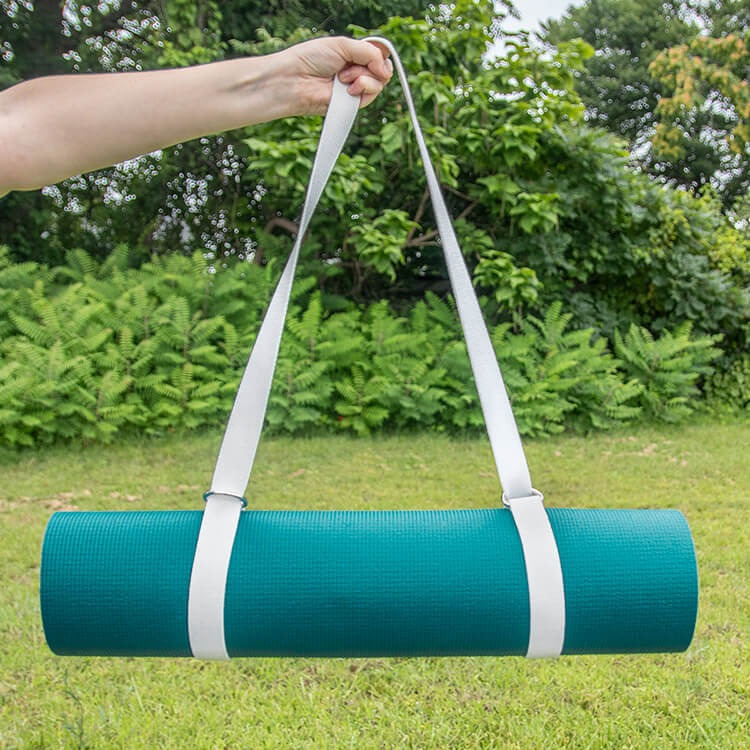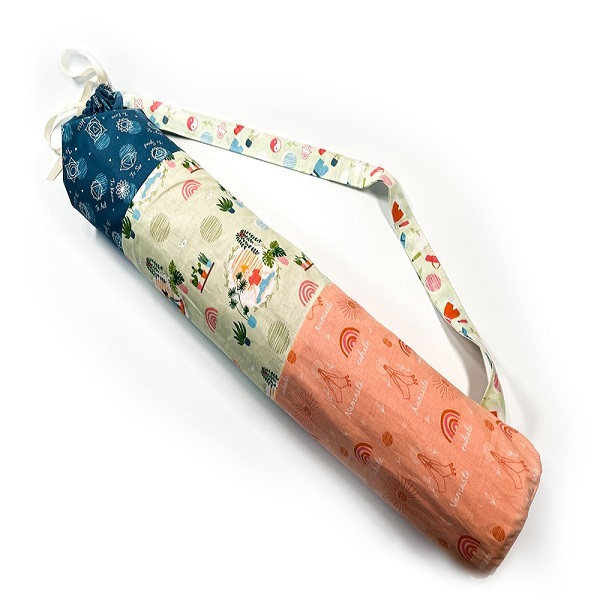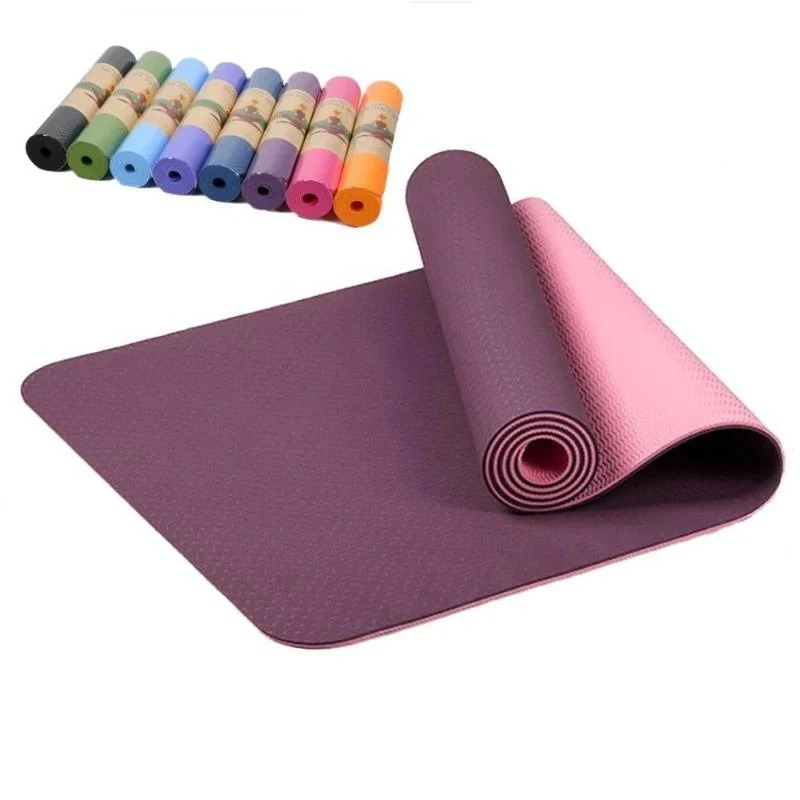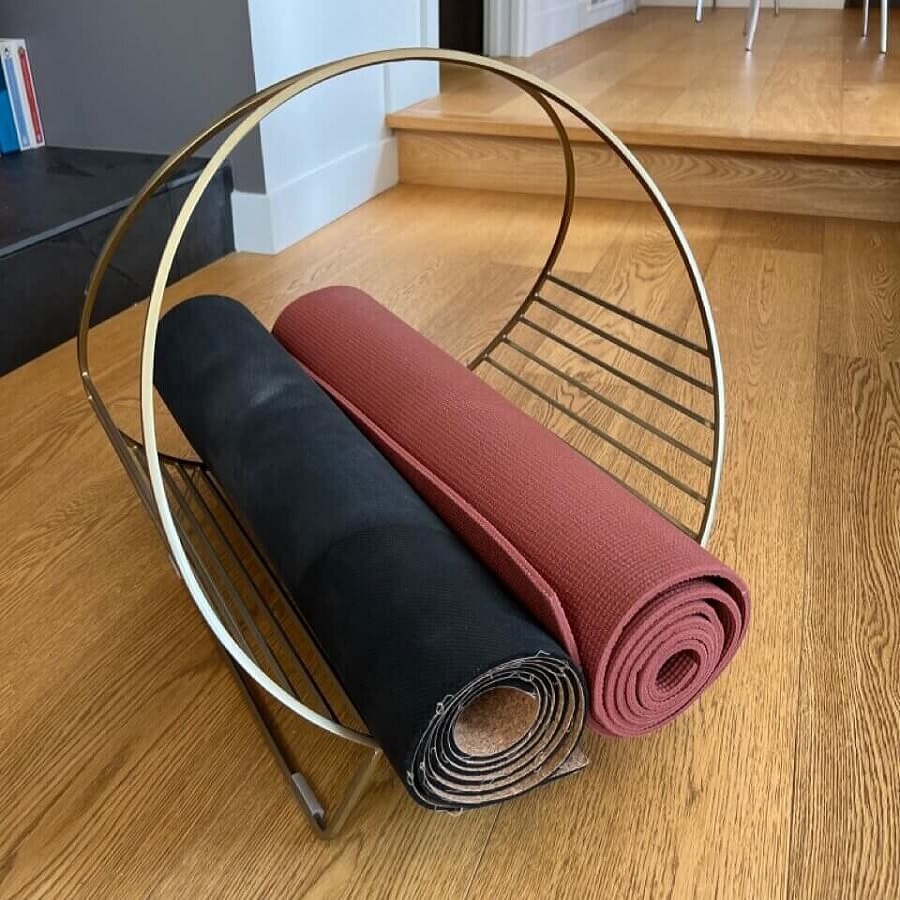Key Causes of a Slippery Yoga Mat
Material and Manufacture Factors
How to make a yoga mat less slippery? The material of a yoga mat greatly affects its grip. Mats made from PVC are less sticky and can feel greasy. This greasiness is due to a factory-applied layer to prevent sticking to machines. Natural rubber or TPE mats have better natural traction. Some mats also have a textured surface to improve grip. It’s important to consider these factors when choosing a mat.

Impact of Sweat and Moisture
Sweat reduces your yoga mat’s grip, making it slippery. During yoga, your body releases sweat which can collect on the mat surface. This is even more common in hot yoga or intense sessions. Moisture makes the mat surface slick, leading to potential slips. High humidity in your practice space can also make mats slippery. To prevent this, you need to manage sweat and use the right cleaning techniques.
Tips for Immediate Grip Improvement
Ensuring a stable practice on your yoga mat starts with quick grip enhancements. Let’s discuss ways to improve your grip right away.
Proper Hand and Foot Placement
Perfecting hand and foot placement is key. Spread your fingers and toes wide. Press firmly into the mat. Aim for a flat, even distribution of weight. This strengthens your pose and grip.
Core Engagement and Weight Distribution
A strong core equals a strong practice. Engage your lower belly as you breathe. This supports your body evenly. It reduces slippage by preventing added pressure in the wrong places. Distribute your weight wisely to avoid slipping.
Cleaning and Maintenance Strategies
Using the Right Cleaning Solutions
Properly cleaning your yoga mat boosts grip. Avoid soaps and cleaners that leave a residue. Instead, opt for a yoga mat cleaner or a simple water and vinegar solution. Applied after every session, this can maintain the mat’s stickiness.
Remember, using the correct solutions can prevent slipping caused by residue.
Routine Yoga Mat Care
Regular yoga mat cleaning is vital. Wipe down your mat with a damp cloth after every practice. For a deeper clean, mix water with mild soap. Spray it on and wipe off. Let your mat dry completely before rolling. Consistent care ensures a safer grip on your mat.
Do not soak your mat in water or scrub with harsh materials. Take care to follow the mat’s care instructions closely.
Keeping a clean mat is not just about preventing slips; it’s also about enhancing your practice’s safety.

Tools to Enhance Mat Traction
Improving your yoga mat’s traction can revolutionize your practice. Here’s how.
Importance of Yoga Towels and Mattoppers
Yoga towels and mattoppers can provide that extra bit of grip. They absorb sweat and add another layer of stickiness. Key benefits include:
- Extra layer for sweat absorption.
- Boosts grip when layered on a mat.
- Helps prevent slipping in intense sessions.
Yoga towels are especially useful in hot yoga classes. A yoga towel laid over your mat can mean the difference between slipping and stability.
Using Grip-Enhancing Sprays and Lotions
Consider grip sprays and lotions for that extra stickiness. They’re made to give your hands and feet a non-slip surface. Here’s what to do:
- Apply sprays or lotions before practice.
- Choose non-toxic, skin-friendly options.
- Reapply as necessary for long sessions.
These products work well when you’re sweating a lot. Just make sure to follow the directions closely to avoid buildup that can reduce their effectiveness.
Mat Material Selection for Better Grip
Choosing the right material is essential for a non-slip yoga mat. The type of material influences the mat’s grip, feel, and lifespan. Here we discuss the pros and cons of various yoga mat materials.
Pros and Cons of Different Yoga Mat Materials
- PVC Mats: These are affordable and widely available but tend to be less sticky. They might feel slippery, especially when new due to a manufacturing film. PVC mats require frequent cleaning to maintain grip.
- Rubber Mats: Offer a natural, high-grip surface. They are eco-friendly but can be more expensive. Rubber mats are a great choice for superior traction.
- TPE Mats: These are a balance between grip and price. They are durable and have good stickiness, making them a solid mid-range option.
- Cork Mats: Cork’s grip improves with moisture, making them ideal for hot yoga or sweaty practices. They are also sustainable and have antimicrobial properties.
Each material has its advantages and limitations. When selecting a mat, consider your yoga style and how much you sweat. Always prioritize non-slip features for safety during practice.

Specialized Non-Slip Yoga Mats
Some mats are designed specifically to reduce slipping. These specialized non-slip yoga mats typically feature:
- Enhanced Texture: For a better grip during various poses.
- Moisture Absorption: To handle sweat effectively, reducing slip risk.
- Innovative Design: Such as unique patterns that aid in grip and alignment.
Brands like Manduka and Liforme make mats known for their non-slip surfaces. Consider investing in one if you struggle with slipping. Remember to clean these mats correctly to preserve their non-slip properties.
Pre-Practice Preparation
Before beginning your yoga session, preparing your skin can boost your grip on the mat.
Skin-Care Product Avoidance
Products like lotions and oils can make your yoga mat slippery. It’s best to avoid applying them before yoga. Clean your hands and feet well to remove any residues. This way, you ensure a better grip on the mat during practice.
Pre-Practice Antiperspirant Application
For those who sweat more, applying an antiperspirant to hands and feet is helpful. This reduces moisture and helps you maintain a firm grip on your mat. Remember, use non-greasy formulas to prevent slipperiness. A little product goes a long way, so use sparingly before you start your poses.
When to Consider a Yoga Mat Upgrade
Identifying Signs of Wear and Tear
Knowing when to replace your yoga mat is key for a safe practice. Look for clear signs like fading colors or a smooth surface that used to be textured. Mats may also thin out, offering less support for knees and wrists. If you see tears or parts peeling away, it’s replacement time. Regular checks will keep your practice both safe and comfortable.
A mat that’s past its prime can hurt your performance. You’ll struggle more to hold poses, disrupting your flow. This can lead to poor form and even injury. Don’t wait too long; if you notice these signs, start shopping for a new mat.
Advantages of High-Performance Mats
Yoga is a practice that has been gaining popularity all around the world for its numerous physical and mental health benefits. When practicing yoga, it is essential to have the right equipment to enhance the experience and make it safer and more comfortable. One of the most important pieces of equipment for practicing yoga is the yoga mat.
Improved Comfort and Support
One of the primary benefits of using a yoga mat is the improved comfort and support it provides during yoga practice. Yoga mats are typically made of a cushioned material that provides a comfortable surface to practice on, especially when practicing on hard or uneven surfaces. The cushioning also helps to protect your joints, such as the knees and wrists, from excessive pressure and discomfort. Additionally, the non-slip surface of yoga mats provides stability and prevents slipping, which is crucial for maintaining proper alignment and balance during yoga poses.

Hygienic and Safe
Yoga mats act as a barrier between your body and the floor, which is particularly important when practicing in public spaces or shared yoga studios. Using a yoga mat helps to prevent direct contact with sweat, dirt, and bacteria that may be present on the floor, making your practice more hygienic and safe. Additionally, many yoga mats are made of materials that are easy to clean and maintain, allowing you to keep your practice space sanitary and germ-free.
Enhanced Alignment
Proper alignment is crucial in yoga to ensure that you are getting the most out of each pose and to prevent injuries. A yoga mat typically comes with alignment markers or patterns that can help you maintain proper posture and positioning during your practice. These markers can serve as a guide for placing your hands and feet correctly, aligning your spine, and finding the right distance between your limbs.
